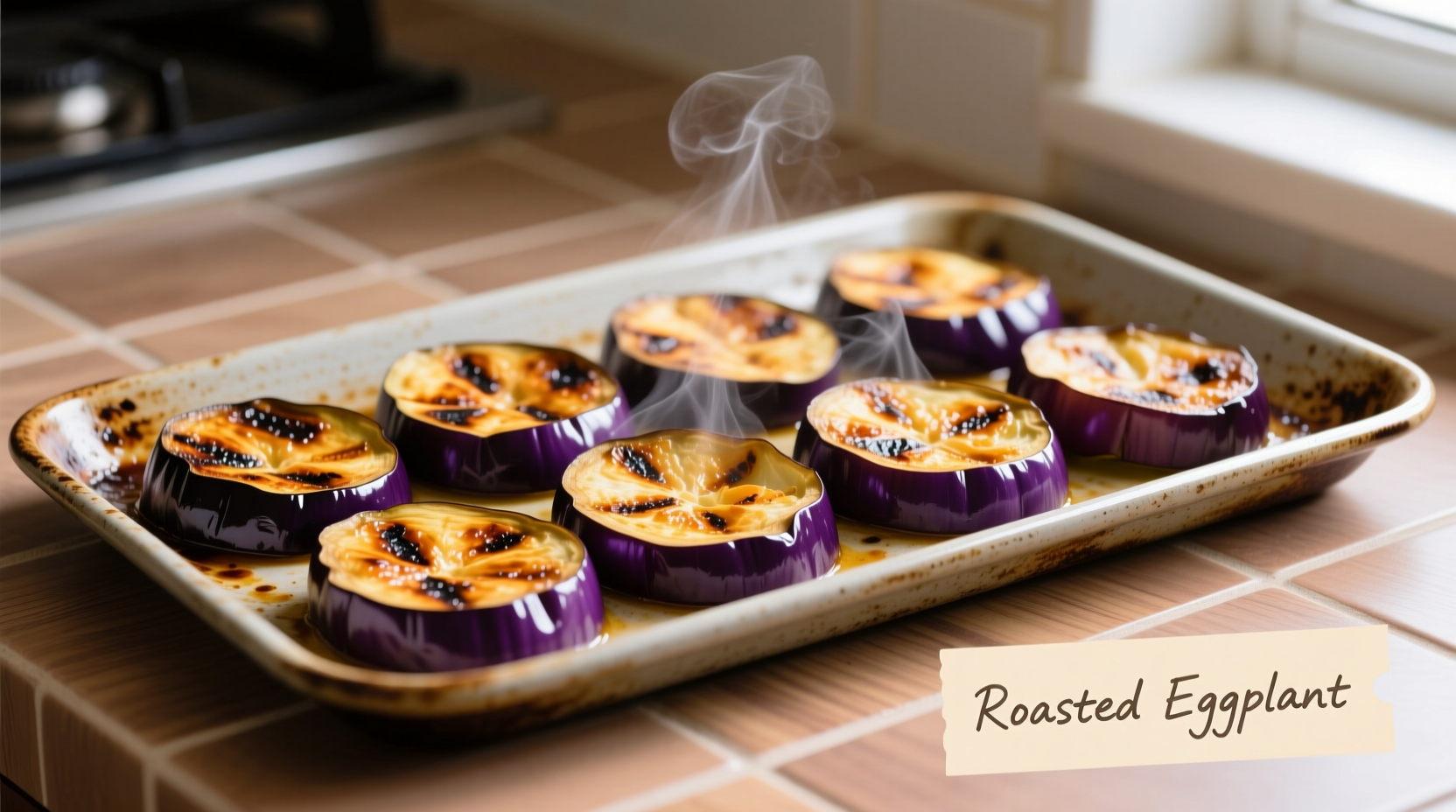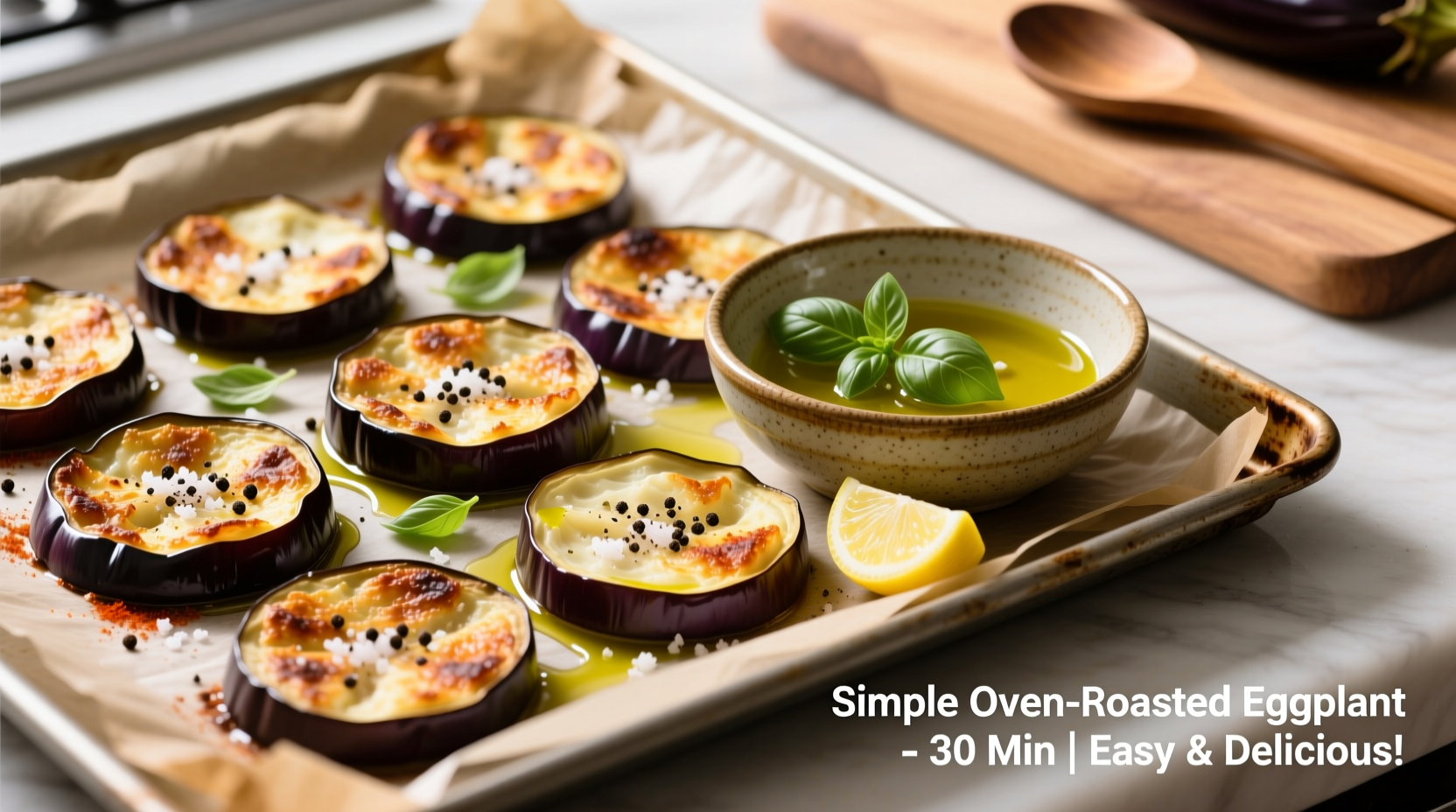Perfectly roasted eggplant requires preheating your oven to 400°F (200°C), slicing eggplant into 1-inch rounds or cubes, salting to remove bitterness, and roasting for 25-35 minutes until golden brown and tender. The key to success lies in proper preparation, oil selection, and monitoring doneness through visual and texture cues rather than strict timing.
Nothing transforms humble eggplant quite like the dry heat of an oven. When prepared correctly, oven-roasted eggplant develops a rich, creamy texture with complex caramelized flavors that elevate any dish from simple side to star ingredient. Unlike frying, oven roasting preserves nutritional benefits while creating that perfect balance of tender interior and slightly crisp exterior that makes eggplant so versatile in Mediterranean, Middle Eastern, and Asian cuisines.
Why Oven Roasting Beats Other Cooking Methods
While grilling and frying remain popular eggplant preparation techniques, oven roasting offers distinct advantages for home cooks. The controlled environment of your oven ensures even cooking without the risk of sogginess that often plagues fried eggplant. According to culinary research from the USDA Agricultural Research Service, dry-heat methods like roasting preserve more of eggplant's beneficial antioxidants compared to water-based cooking techniques.
| Cooking Method | Texture Result | Oil Absorption | Best For |
|---|---|---|---|
| Oven Roasting | Creamy interior, slightly crisp exterior | Minimal (1-2 tbsp) | Healthy preparations, meal prep |
| Frying | Soft throughout | High (⅓ cup+) | Traditional moussaka, quick meals |
| Grilling | Charred exterior, firm interior | Moderate (2-3 tbsp) | Summer cooking, smoky flavor profiles |
Selecting & Preparing Your Eggplant for Success
The journey to perfect oven-roasted eggplant begins at the market. Choose firm, heavy-for-their-size eggplants with smooth, glossy skin. Avoid specimens with wrinkles, soft spots, or discoloration. The most common globe eggplant works perfectly for roasting, but Japanese or Italian varieties offer interesting alternatives with thinner skins and fewer seeds.
Before slicing, wash your eggplant thoroughly under cool running water. Many home cooks wonder whether to peel eggplant before roasting. The skin contains valuable nutrients and helps maintain structure during cooking, so leaving it on is generally recommended unless you're using a particularly large, mature eggplant with tough skin.
The Critical Salting Step (And When You Can Skip It)
Traditional eggplant preparation involves salting slices to draw out moisture and reduce bitterness. While modern hybrid varieties are significantly less bitter than heirloom types, salting remains valuable for texture improvement. Here's the professional approach:
- Slice eggplant into 1-inch rounds or cubes
- Sprinkle generously with kosher salt (about 1 tsp per medium eggplant)
- Let sit in a colander for 30-60 minutes
- Rinse thoroughly and pat completely dry with paper towels
Recent studies from the University of Minnesota Extension confirm that salting reduces oil absorption by up to 30% during cooking, resulting in less greasy finished product. However, if using younger, smaller eggplants, you can skip salting without compromising quality.

Step-by-Step Oven Roasting Technique
Follow these precise steps for consistently excellent results every time you cook eggplant in oven:
- Preheat oven to 400°F (200°C) with rack positioned in the center
- Prepare baking sheet with parchment paper or silicone mat (avoid aluminum foil which can cause sticking)
- Toss prepared eggplant with 1-2 tablespoons high-quality olive oil (or avocado oil for higher smoke point)
- Season simply with salt, pepper, and optional garlic powder or dried herbs
- Arrange in single layer with space between pieces for proper air circulation
- Roast 25-35 minutes, flipping halfway through, until golden brown and tender when pierced with a fork
Professional Flavor Enhancement Secrets
Elevate your oven-roasted eggplant from basic to extraordinary with these chef-recommended techniques:
- Add acid early: A splash of lemon juice or vinegar in the oil mixture prevents oxidation and brightens final flavor
- Layer flavors: Toss eggplant with half your seasoning before roasting, then finish with remaining herbs after cooking
- Try the steam-roast method: Cover baking sheet with foil for first 15 minutes, then uncover to finish for extra-tender interior
- Finish with texture: Sprinkle with toasted pine nuts or sesame seeds just before serving
Troubleshooting Common Eggplant Roasting Problems
Even experienced cooks encounter these oven-roasted eggplant challenges. Here's how to fix them:
- Soggy eggplant: Result of insufficient drying after salting or overcrowded baking sheet. Solution: Pat thoroughly dry and ensure single-layer spacing.
- Bitter taste: Usually from underripe eggplant or skipping salting step. Solution: Choose fully ripe specimens and don't skip salting for larger varieties.
- Dry, tough texture: Overcooking or insufficient oil. Solution: Check for doneness starting at 25 minutes and use adequate (but not excessive) oil.
- Uneven cooking: Result of inconsistent slice thickness. Solution: Use mandoline for uniform 1-inch slices.
Serving Suggestions That Showcase Your Perfectly Roasted Eggplant
Oven-roasted eggplant's versatility makes it suitable for countless applications. Try these professional pairings:
- Mediterranean platter: Serve warm with hummus, tzatziki, and pita bread
- Pasta enhancement: Toss with whole wheat penne, cherry tomatoes, and fresh basil
- Hearty sandwich filling: Layer with roasted red peppers and goat cheese on ciabatta
- Breakfast upgrade: Add to shakshuka during the last 5 minutes of cooking
Storage and Reheating for Maximum Freshness
Properly stored, roasted eggplant maintains quality for future meals. Cool completely before transferring to airtight container. Refrigerate for up to 4 days or freeze for up to 3 months. When reheating:
- Oven method: 350°F for 10-15 minutes on baking sheet
- Skillet method: Medium heat with small oil splash for 3-5 minutes
- Avoid microwave: Creates uneven texture and sogginess











 浙公网安备
33010002000092号
浙公网安备
33010002000092号 浙B2-20120091-4
浙B2-20120091-4